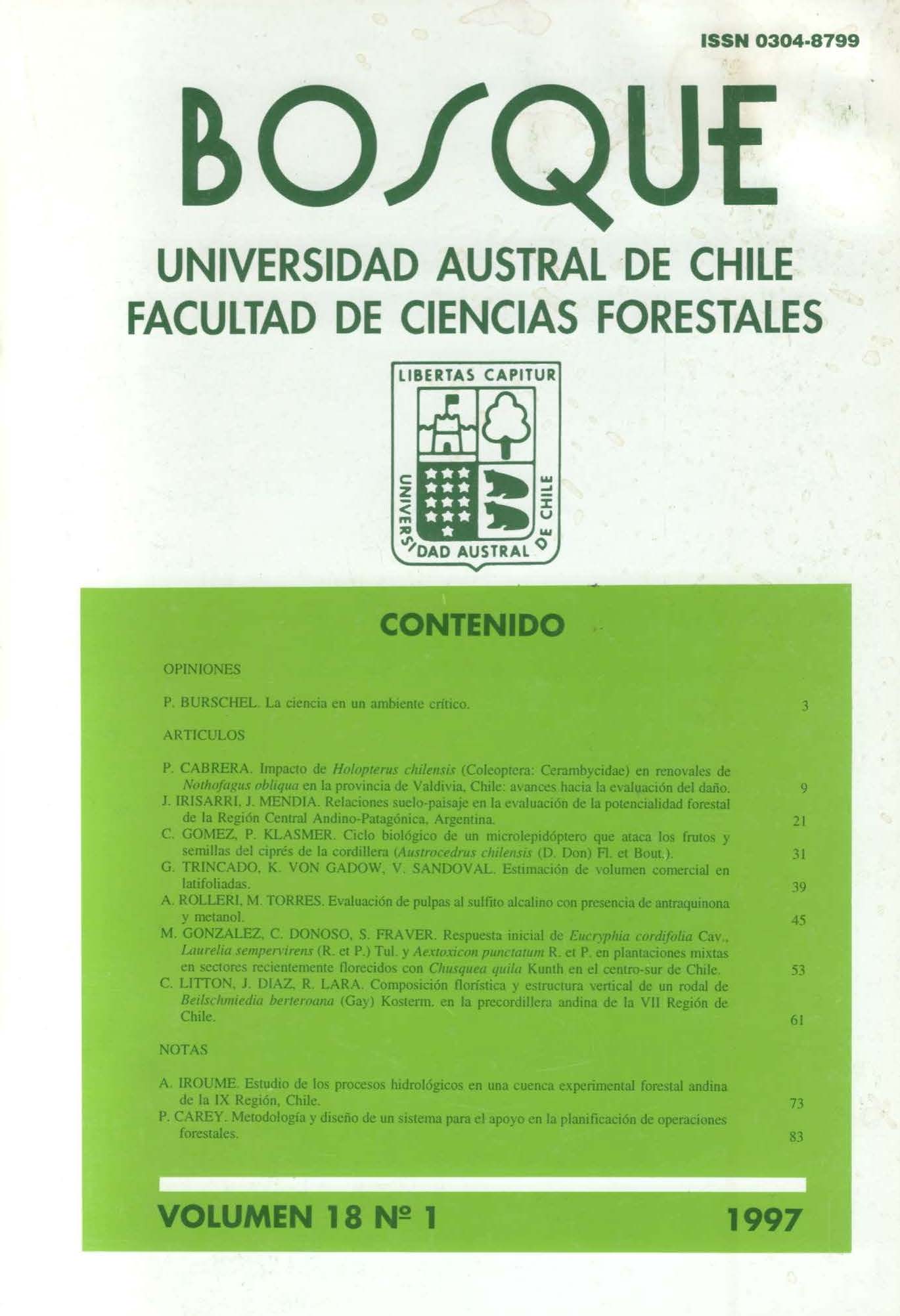Soil landscape relationship in the evaluation for the forestry potentiality in the central andino-patagónica region, Argentina
Main Article Content
Abstract
The western region of the Argentinian Patagonia lies between parallels 36 and 46 and is characterised by a Mediterranean climate with a decreasing rainfall gradient of 100 mm/km in a west-cast direction starting from an annual rainfall of 3.5 to 4 m in the Argentina-Chile border.
The area is mountainous with absolute height variations between 800 and 1000 m covered with a thick basic holocenic Piroclastic layer.
The marked variation in the climate gives way to rapid changes in the magnitude of the pedogenetic processes, on the volcanic ash. The magnitude of the andosolization process gives way to different soil characteristic with significant impact on the vegetation that is linked to how the water retention is taken advantage of at the end of the dry season.
The hydric balance (latitude/altitude/exposure and gradient) linked to the landscape characteristics, become important when the soil maps are drawn and their interpretation is done in order to evaluate forest productivity.
In conclusion, at the time of defining forest potential, the selection of adequate soil characteristic (Soil Landscape relationship) becomes an important aspect.

